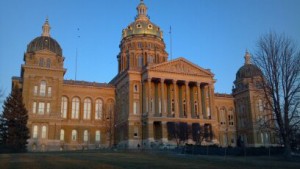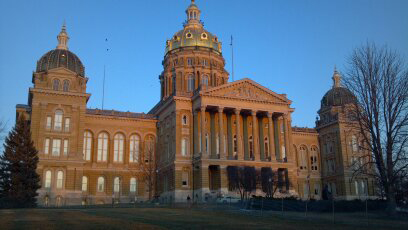
CEDAR RAPIDS — Despite the efforts of Republicans to win a majority in the Iowa Senate and take control of both chambers of the Legislature as well as the Governor’s Office, voters took a less-traveled path in the November election.
In 2013, Republicans will have control of the governors’ offices and legislatures in 25 states representing 53 percent of the nation’s population. Democrats will have total control in 15 states that include about 37 percent of the country’s population.
That leaves Iowa among the 10 states in which neither party is in control and among just four where neither party controls both chambers of the legislature.
The march toward one-party rule comes as a bit of surprise to Peverill Squire, a former University of Iowa political scientist now teaching at the University of Missouri.
The number of one-party states is higher than in at least a generation, according to Squire, the senior editor of “Legislative Studies Quarterly.”
“I think, in part, it sort of reflects the polarized nature of our politics,” he said. However, he points out that in Missouri voters gave legislative Republicans a veto-proof majority even as they re-elected a Democratic governor and U.S. senator.
REDRAWING DISTRICTS
One difference between Missouri and Iowa is the way legislative districts are drawn every 10 years following the census.
“In states where you have redistricting under partisan control, I think you’ve seen that those who draw the lines have gotten very good at drawing them to one party’s advantage,” Squire said.
“I think one reason Iowa has split control of its chambers is that you really do have as about a non-partisan process for drawing lines there as anyplace,” he said. “The state is closely split between Democrats and Republicans and the Legislature reflects that to a greater degree than if one party had been able to draw the lines to their benefit.”
Unlike most states, Iowa’s redistricting process is handled by the non-partisan Legislative Services Agency. It draws the boundaries based on population data and presents it to the Legislature for approval.
Chris Larimer, who teaches political science at the University of Northern Iowa, agrees that the key to split control is the redistricting process. He points to the relatively close margins in the Legislature since the non-partisan process was instituted in the 1970s.
“You’ve seen a few big swings in elections in Iowa, but really it’s kind of hovered between that 45 and 55 percent majority-minority,” he said. After controlling the House 60-40 for two years, Republicans saw their margin trimmed to 53-47 in the 2012 election. In the Senate, the parties shared control in 2005 when they were tied at 25. Democrats’ majority grew to 32-18 in 2008, but after 2010 was 26-24.
“I think a large part of that has to be redistricting,” Larimer said. “It’s drawn without regard to party and incumbency. That leaves at least a little bit of competition.”
NOT ALWAYS SPLIT
Iowa has not always had split control. Democrats, for example, controlled both chambers of the Legislature and the Governor’s Office when Chet Culver was elected in 2006. As far as Brad Anderson, Culver’s press secretary for two years, is concerned, there was a “tremendous upside” to one-party rule that allowed Democrats to enact a number of long-term priorities to the benefit of Iowans.
“We got a lot done,” said Anderson, now a political strategist who led President Barack Obama’s re-election effort in Iowa.
The Legislature approved increases in teacher pay, raised the minimum wage and tobacco taxes, established the Iowa Power Fund and approved Culver’s I-JOBS program.
“We did a lot of things that did a lot really great things for the state,” Anderson said. “There was a tremendous upside just by the sheer force of what we could get done.”
Democrats’ string of legislative accomplishments was typical of one-party control, especially after years of split control, Squire said.
“I think you tend to get the big things after there has been a change in control,” he said. “The new majority party has a pent-up demand for things they want to get done.”
CHECKS AND BALANCES
Larimer and Squire suggest not all of the concerns with one-party rule are based in partisanship. That’s because split control is a form of checks and balances that prevents state government going too far in any one direction. However, it also can lead to gridlock and a “slow and uncompromising process,” Larimer said.
Split control offers a competition of political agendas, Squire said. A minority party can “shine a light on what the majority is doing and offer an alternative.”
If, however, “the minority becomes insignificant, then you run the risk of having politics becoming very stale,” Squire said. “The big concern is corruption will set in.”
That leads Larimer back to the value and importance of Iowa’s non-partisan redistricting process.
“Legislators have to think about that in whatever number of years their district could change entirely and they could be dumped with three to four thousand new constituents,” he said.







